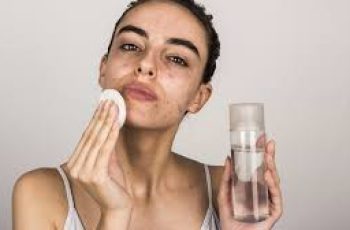
What Is Skin Cycling, and Should You Try It?
If you spend any time scrolling through Instagram or TikTok, you might have come across the term “skin cycling” more than once in recent months.
It’s a trending term in beauty content, often featured in posts by influencers, dermatologists, or skincare enthusiasts.
On TikTok, the hashtag #skincycling has over 120 million views and growing rapidly.
In total, mentions of skin cycling have gathered more than 3.5 billion views across the platform.
Clearly, skin cycling is getting attention. But what exactly does it mean, and is it worth trying?
Let’s break it down, explore the method, and determine if this routine is suitable for your skincare needs.
What Is Skin Cycling?
Despite its name, skin cycling has nothing to do with physical cycling or fitness routines.
It’s actually a skincare method that focuses on rotating products over a multi-day cycle.
The idea is to apply potent products only on certain nights, followed by “rest days” to help the skin recover.
This method was popularized by Dr. Whitney Bowe, a dermatologist based in New York City.
Her viral video explaining the concept has over 2 million views on TikTok.
However, while the name is new, the concept is not.
Many dermatologists have been recommending the intermittent use of active ingredients for years.
Dr. Debra Wattenberg, a board-certified dermatologist, confirms this in her clinical experience.
So why has skin cycling become popular now?
It could be due to the easy-to-remember name or the fact that people are overwhelmed with skincare.
During the pandemic, skincare routines grew increasingly complex for many people.
People began layering multiple products, experimenting with active ingredients, and damaging their skin barriers.
This led to confusion and irritation, especially with inconsistent advice circulating on social media.
Skin cycling offers a simple structure and clarity around how to use active ingredients wisely.
How Does Skin Cycling Work?
Skin cycling usually follows a four-night cycle: exfoliation, retinoid, recovery, and recovery again.
You can repeat this cycle as long as it suits your skin and make adjustments as needed.
Let’s explore what each night looks like in detail.
Night 1: Exfoliation
On the first night, you cleanse your face, pat it dry, and apply an exfoliating product.
Exfoliation helps remove dead skin cells and improves product absorption.
Dr. Bowe prefers chemical exfoliants like glycolic acid or salicylic acid over physical scrubs.
Chemical exfoliants tend to be gentler and more effective than scrubs with rough particles.
After exfoliating, apply a gentle, fragrance-free moisturizer to lock in hydration.
Over-exfoliating can lead to irritation, so once every four nights is generally safe.
If your skin feels red or sore after exfoliating, take a longer recovery period.
Night 2: Retinoid
Retinoids are powerful derivatives of vitamin A that help improve skin texture and reduce wrinkles.
This includes prescription versions like tretinoin or over-the-counter ones like retinol.
Retinoids can cause dryness and irritation, especially when first introduced to the skin.
Cleanse and pat dry your face before applying your retinoid product.
If your skin is sensitive, apply moisturizer around delicate areas before the retinoid.
These include spots like under your eyes, corners of your nose, and your mouth.
Once the retinoid is on, you can also apply another layer of moisturizer over it for added protection.
This “sandwich method” helps reduce irritation while still benefiting from the retinoid’s effects.
Nights 3 and 4: Recovery
These nights are dedicated to giving your skin time to heal, hydrate, and strengthen.
You skip active ingredients like exfoliants and retinoids during this phase.
Instead, focus on nourishing your skin with a simple, hydrating routine.
Cleanse your skin and apply a barrier-repair moisturizer or a hydrating serum.
You don’t need to dry your face completely; leaving it slightly damp can help lock in moisture.
These recovery nights are key to preventing overuse and irritation from powerful products.
They also help maintain a healthy skin barrier and microbiome, which protects your skin from damage.
Can the Routine Be Adjusted?
Yes, the skin cycling method is flexible and can be personalized to fit your skin type.
If your skin is sensitive or reacting, increase the number of recovery nights.
If you’re more experienced or tolerant of retinoids, reduce recovery nights for a shorter cycle.
Some people follow a three-night cycle with just one recovery night between actives.
Others with more delicate skin might need three or four recovery nights.
The key is to listen to your skin and adapt the routine to what it needs.
What Are the Benefits of Skin Cycling?
Skin cycling can be helpful for a wide range of skin types and concerns.
Let’s take a look at the specific benefits dermatologists have observed.
1. Supports the Skin Barrier
The skin barrier protects you from allergens, pollutants, bacteria, and more.
When it’s damaged, you may experience dryness, redness, breakouts, or irritation.
Using too many active ingredients too often can weaken this barrier.
Skin cycling allows for recovery time so your skin can rebuild and stay resilient.
2. Reduces Irritation From Active Ingredients
Exfoliants and retinoids are highly effective but often cause irritation when overused.
By applying these products on a rotating schedule, you reduce the risk of side effects.
Dr. Wattenberg suggests using moisturizer before and after applying retinoids to buffer sensitivity.
3. Helps Manage Seasonal Skin Changes
Colder weather, dry air, and wind can leave your skin more sensitive or flaky.
Recovery nights in your cycle give your skin the extra care it needs to adapt.
This can prevent seasonal flare-ups of eczema, redness, or dry patches.
What Are the Potential Side Effects?
While skin cycling helps minimize irritation, introducing a new active product can still cause side effects.
For example, retinoids often cause dryness, peeling, and sun sensitivity in the early stages.
That’s why sunscreen is extra important when using retinoids, especially during the day.
If you experience discomfort, give your skin time to adjust or extend recovery periods.
People with sensitive skin should start slowly and patch-test any new products.
What Do Dermatologists Think?
Most dermatologists agree that skin cycling can be a great option, especially for beginners.
It creates a clear, manageable routine and helps people avoid overusing products.
Dr. Bowe has received positive feedback from people who now feel more confident in their routines.
However, some dermatologists caution that results may come more slowly with this method.
Daily use of retinoids may provide faster results in clinical trials, but not everyone can tolerate that.
Dr. Zeichner sees skin cycling as a “warm-up routine” that can be expanded over time.
It’s better to be consistent and gentle than to use too many actives and cause damage.
Who Should Try Skin Cycling?
If you’re new to retinoids or exfoliants, this method can be a smart way to ease in.
It’s also helpful for people with sensitive, dry, or reactive skin.
Skin cycling is especially valuable if you’re unsure how to layer or combine active products.
Those who are using prescription skincare, like for acne or rosacea, should consult a dermatologist first.
If you already tolerate daily retinoids well, skin cycling may not be necessary for you.
However, the structure and rest days can still help maintain healthy skin long term.
Who Might Want to Skip Skin Cycling?
Some people with oily or acne-prone skin may already tolerate daily exfoliation or retinoids.
In those cases, skin cycling may feel too slow or gentle.
That said, even these skin types can benefit from occasional rest days.
People with very advanced skincare routines may already have something similar in place.
But for the average person, skin cycling offers a beginner-friendly and effective framework.
Bottom Line: Is Skin Cycling Worth It?
Skin cycling isn’t about buying more products or complicating your routine.
It’s about using fewer products more strategically for better results and healthier skin.
It teaches balance, structure, and patience — things that are often missing in modern skincare trends.
Whether you’re dealing with irritation or simply overwhelmed by product choices, skin cycling can help.
It’s an accessible and dermatologist-approved method that empowers people to take control of their skincare.


